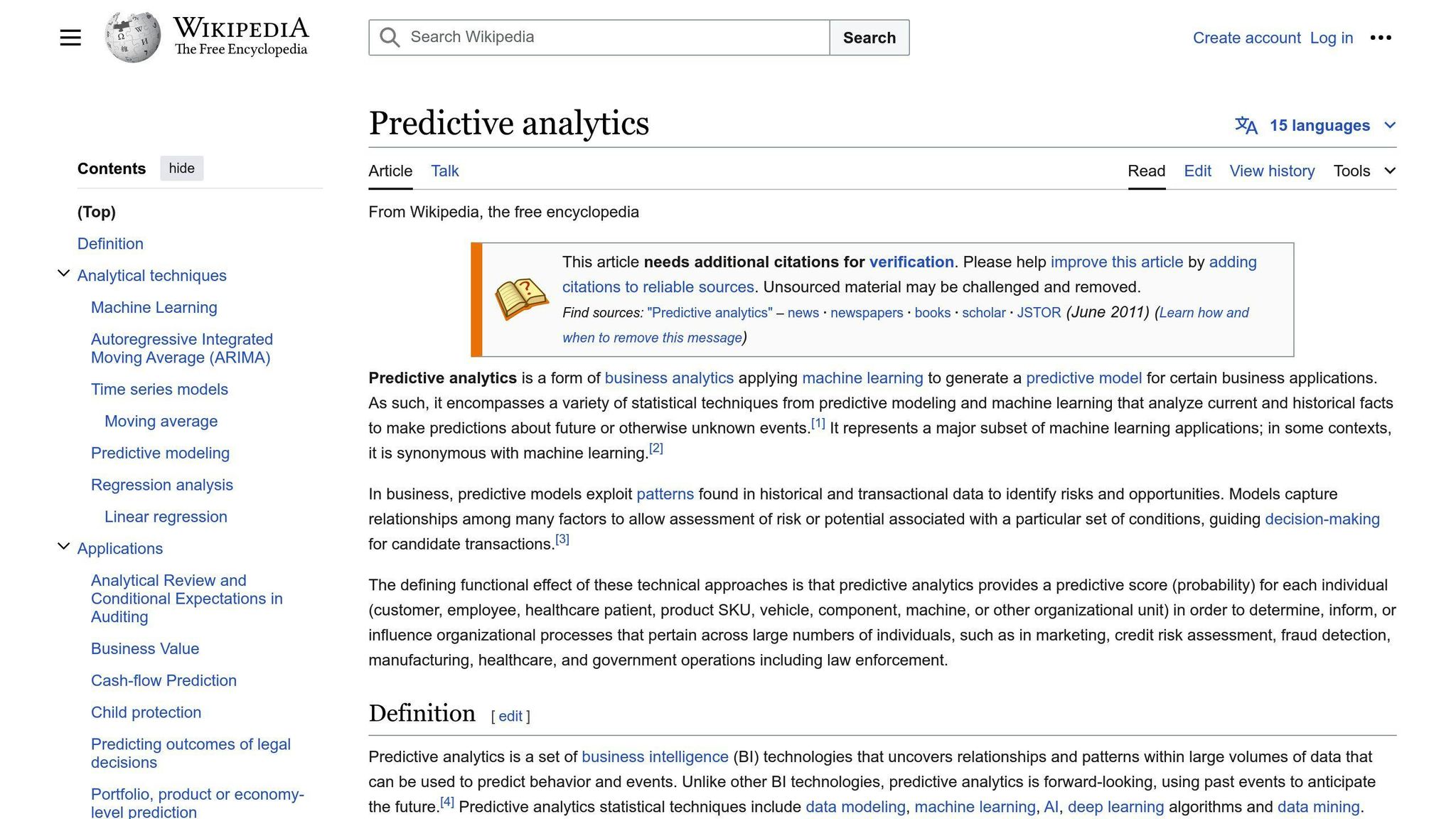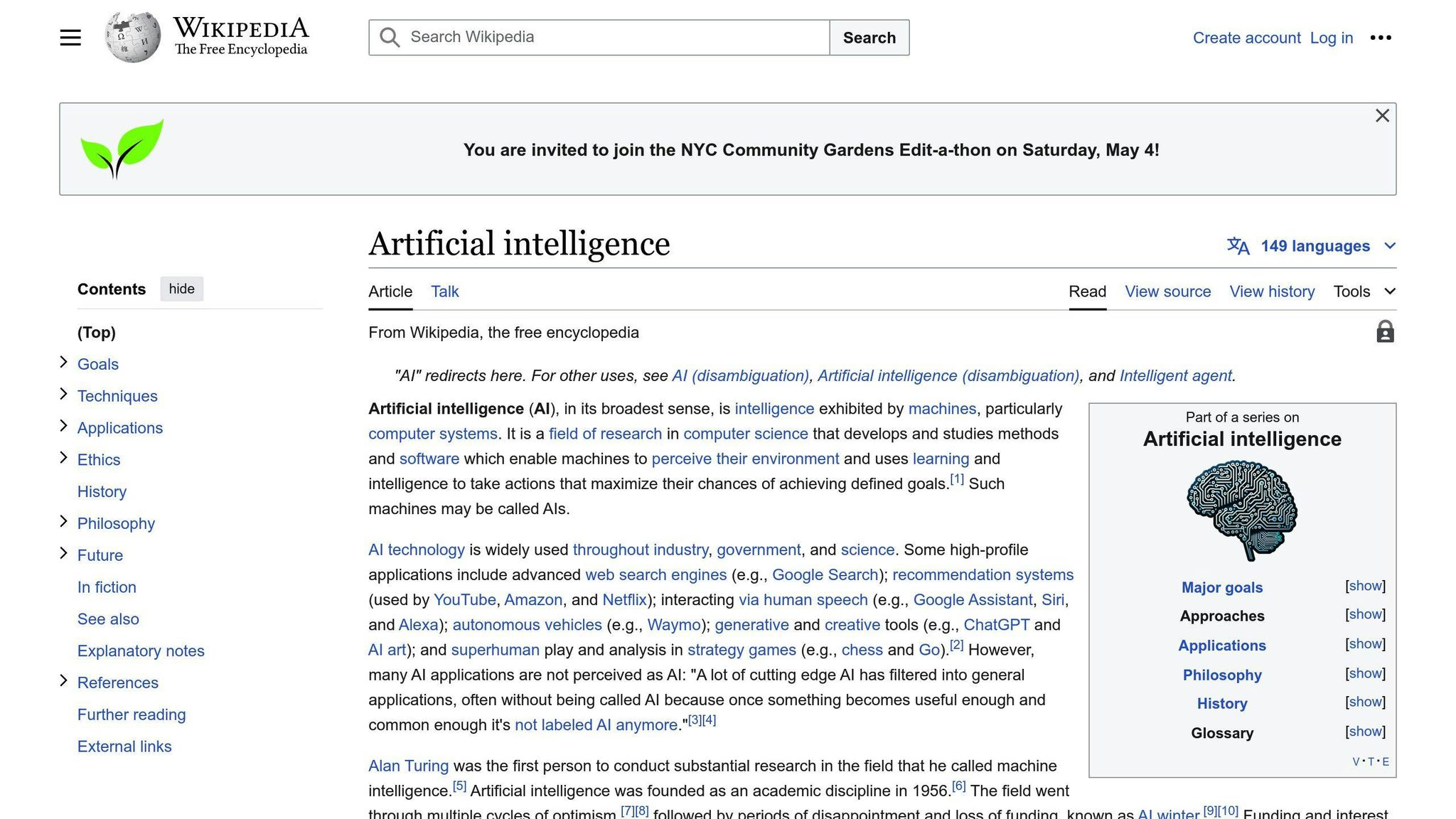
9 Ways AI Personalization Boosts Customer Engagement
Stop guessing what customers want. Use AI personalization to predict their needs and deliver tailored experiences that drive real engagement.

Written by
Adam Stewart
Key Points
- Predict what customers need before they ask using smart analytics
- Create personalized experiences that stay consistent across all channels
- Use AI chat for 24/7 custom product recommendations
- Track real-time behavior instead of relying on basic customer segments
AI personalization tailors customer experiences using data analysis to understand individual preferences and behavior. This approach offers several key benefits:
- Increased Sales and Satisfaction: Personalized product recommendations and tailored content drive conversions and loyalty.
- Higher Engagement: Relevant experiences encourage customers to interact more with a brand across channels.
- Competitive Edge: Companies can respond quickly to customer needs, optimizing revenue and staying ahead of competitors.
Here are 9 ways businesses leverage AI personalization to boost customer engagement:
- Personalized Product Recommendations: AI analyzes customer data like purchase history and browsing patterns to suggest relevant products tailored to each individual's interests.
- Tailored Content and Offers: By studying customer preferences, AI enables businesses to provide personalized content, promotions, and offers.
- Predicting Customer Needs: AI uses predictive analytics to create detailed customer profiles for targeted marketing and personalized experiences.
- Conversational AI Chatbots: AI-powered chatbots understand customer queries and respond with personalized solutions, offering 24/7 support and product recommendations.
- Optimizing the Customer Journey: AI analyzes individual behavior and preferences to tailor the entire customer experience, from product recommendations to communication.
- Omnichannel Personalization: AI provides consistent, personalized experiences across all channels, enhancing engagement and conversions.
- Personalized Pricing and Dynamic Offers: AI studies customer data to tailor prices and offers in real-time, optimizing revenue and satisfaction.
- Personalized Marketing Automation: AI automates marketing processes by creating tailored messages based on individual preferences.
- Personalized Customer Feedback: AI analyzes customer feedback to provide insights into sentiments, enabling data-driven decisions and improvements.
| Traditional Approach | AI-Powered Personalization |
|---|---|
| Manual customer grouping | Automated grouping using data analysis |
| Limited customization | Real-time customization based on behavior and preferences |
| Generic marketing messages | Tailored messages and offers |
| Manual data review | Automated data analysis using AI |
| Basic customer insights | In-depth insights and sentiment analysis |
| Reactive customer feedback | Proactive feedback and sentiment analysis |
| Manual processing and analysis | Automated processing and analysis using AI |
| Limited scalability | Scalable processing of large customer datasets |
| Time-consuming campaign optimization | Real-time campaign optimization using AI |
By leveraging AI personalization, businesses can drive growth, build lasting customer relationships, and stay ahead of the competition in today's customer-centric market.
Related video from YouTube
1. Personalized Product Suggestions
Businesses can boost sales and customer satisfaction by offering personalized product suggestions. This approach uses data analysis to understand each customer's needs and preferences, then recommends relevant products.
Understanding Customer Preferences
To provide tailored product suggestions, businesses collect and analyze various customer data:
- Purchase history
- Website interactions
- Search queries
- Ratings and reviews
By studying this data, businesses identify patterns in customer behavior and interests.
Benefits of Personalized Suggestions
Personalized product recommendations offer several advantages:
- Increased Sales: Customers are more likely to buy when shown products they want.
- Better Experience: Tailored suggestions make customers feel valued, boosting loyalty.
- Higher Engagement: Relevant recommendations encourage customers to explore more products.
Comparison to Traditional Methods
| Traditional Recommendations | AI-Powered Personalization |
|---|---|
| Based on basic product categories | Analyzes individual customer data |
| One-size-fits-all approach | Tailored to each customer's preferences |
| Limited relevance and effectiveness | More accurate and engaging recommendations |
Unlike traditional methods, AI personalization uses advanced algorithms to analyze customer data and provide highly relevant product suggestions. This targeted approach drives sales, satisfaction, and engagement more effectively.
2. Tailored Content and Offers
To create a personalized experience, businesses analyze customer data to provide tailored content and offers. This approach uses insights from various sources to understand individual preferences and interests.
Understanding Customer Needs
Businesses collect and study customer data, including:
- Purchase history
- Website interactions
- Search queries
- Reviews and ratings
- Social media engagement
By examining this data, they identify patterns and trends that reveal each customer's unique needs and interests.
Benefits of Personalization
Tailored content and offers offer several advantages:
- Increased Engagement: Customers are more likely to interact with relevant content and offers.
- Higher Satisfaction: Personalized experiences make customers feel valued, leading to greater satisfaction.
- Better Conversions: Tailored content and offers increase the chances of customers making a purchase.
Comparison
| Traditional Approach | Personalized Approach |
|---|---|
| One-size-fits-all content and offers | Tailored to individual preferences |
| Limited relevance and effectiveness | More accurate and engaging |
| Basic customer segmentation | Analyzes individual customer data |
Unlike traditional methods, personalization uses advanced data analysis to provide highly relevant content and offers for each customer. This targeted approach drives engagement, satisfaction, and conversions more effectively.
3. Predicting Customer Needs and Segmenting Audiences
Businesses can better understand and cater to individual customer preferences by using predictive analytics and customer segmentation. These techniques analyze customer data to identify patterns and trends, enabling targeted marketing and personalized experiences.
Analyzing Customer Data
Predictive analytics uses statistical models and machine learning to study large datasets, including:
- Demographics: Age, gender, location
- Behavior: Purchase history, website interactions
- Preferences: Product categories, brands
- Company details: Size, industry
By examining these factors, businesses create detailed customer profiles to inform their personalization strategies.
Benefits of Predictive Analytics and Segmentation

- Improved satisfaction: Tailored experiences meet individual needs.
- Higher conversions: Targeted campaigns lead to more sales.
- Increased loyalty: Personalized interactions strengthen customer relationships.
Comparison
| Traditional Approach | Predictive Analytics and Segmentation |
|---|---|
| Limited data analysis | Advanced statistical models and machine learning |
| Basic customer groups | Detailed profiles based on multiple factors |
| One-size-fits-all approach | Tailored experiences and targeted campaigns |
Unlike traditional methods, predictive analytics and segmentation provide a more accurate understanding of customer behavior and preferences. This enables businesses to create personalized experiences that drive engagement, satisfaction, and loyalty.
4. Conversational AI and Chatbots

Chatbots powered by conversational AI are changing how businesses interact with customers. Using natural language processing (NLP) and machine learning, these chatbots understand customer queries and respond with personalized solutions, creating a more engaging experience.
Understanding Customer Intent
Advanced chatbots can grasp context, slang, and intent from conversations. They maintain consistent personalized dialog with customers, complete tasks by integrating with systems and data, and handle questions across multiple topics.
Key Benefits
Chatbots offer 24/7 customer support, personalized product recommendations, and improved satisfaction. By automating simple requests and FAQs, they reduce the workload of human support teams, allowing them to focus on complex issues.
Comparison
| Traditional Approach | Conversational AI Chatbots |
|---|---|
| Limited availability | 24/7 support |
| Inconsistent responses | Consistent personalized dialog |
| Potential human error | Automated accurate responses |
Unlike traditional methods, conversational AI chatbots provide an efficient, personalized, and accurate way to interact with customers. By leveraging AI-powered chatbots, businesses can boost customer engagement, satisfaction, and loyalty.
5. Personalized Customer Journey Optimization
Understanding Customer Behavior
Companies analyze customer data to understand how individuals interact with their products or services. This data includes purchase history, website activity, and engagement levels. Using AI algorithms, businesses can process large amounts of data to identify patterns and preferences. This allows them to tailor experiences and recommendations to each customer's unique needs.
Benefits of Personalization
By optimizing the customer journey for individuals, companies can:
- Increase customer satisfaction and loyalty
- Improve conversion rates and revenue
- Boost customer engagement and retention
- Gain an edge over competitors
Comparing Traditional and AI-Powered Methods
| Traditional Approach | AI-Powered Optimization |
|---|---|
| Manual data analysis and segmentation | Automated data analysis and segmentation |
| Limited data processing capabilities | Advanced data processing capabilities |
| Less accurate customer profiling | More accurate customer profiling |
| Time-consuming and labor-intensive | Efficient and automated |
Traditional methods rely on manual analysis and segmentation, which can be inaccurate and time-consuming. AI-powered optimization uses advanced algorithms to process data and create accurate customer profiles efficiently.
Tailoring the Customer Experience
By understanding individual customer behavior and preferences, companies can:
- Recommend relevant products and services: AI algorithms suggest items based on each customer's needs and interests.
- Personalize communication: Emails, notifications, and messaging are tailored to individual preferences.
- Optimize website and app experiences: Content, layout, and features are customized for each user.
- Provide targeted offers and promotions: Special deals and discounts are tailored to individual interests and behaviors.
sbb-itb-ef0082b
6. Personalized Omnichannel Experiences
Understanding Customer Behavior Across Channels
To provide a seamless experience across all touchpoints, companies analyze customer data from various sources:
- Website interactions
- Social media engagement
- Email responses
- In-store purchases
By collecting and processing this data, businesses can identify patterns and preferences, allowing them to tailor experiences and recommendations to each customer's unique needs.
Benefits of Omnichannel Personalization
Personalized experiences across all channels offer several advantages:
- Increased Customer Satisfaction: Consistent, personalized experiences across channels boost satisfaction and loyalty.
- Higher Conversion Rates: Customers are more likely to engage with tailored content and offers, leading to increased conversions.
- Enhanced Engagement: Omnichannel personalization encourages customers to interact with a brand across multiple channels, fostering a deeper connection.
Comparison with Traditional Approaches
| Traditional Approach | AI-Powered Omnichannel Personalization |
|---|---|
| Limited data analysis capabilities | Advanced data analysis and processing |
| Inconsistent customer experiences | Consistent, personalized experiences across channels |
| Manual segmentation and profiling | Automated segmentation and profiling using AI |
Traditional methods rely on manual data analysis and segmentation, resulting in inconsistent customer experiences. AI-powered omnichannel personalization uses advanced algorithms to process data and provide a seamless, personalized experience across all channels.
7. Personalized Pricing and Dynamic Offers
Analyzing Customer Data
To offer personalized pricing and dynamic offers, businesses analyze customer data using AI algorithms. This data includes:
- Browsing history
- Purchase behavior
- Search patterns
By studying this information, companies can identify individual preferences and patterns. This allows them to tailor prices and offers to each customer.
Benefits
Personalized pricing and dynamic offers provide several advantages:
- Optimized Revenue: Prices can adjust in real-time based on demand and customer behavior, maximizing revenue.
- Increased Customer Satisfaction: Tailored prices and offers make customers feel valued, boosting satisfaction.
- Competitive Edge: Companies can respond quickly to market changes and customer needs, gaining an advantage over competitors.
Comparison
| Traditional Approach | AI-Powered Personalization |
|---|---|
| Manual price adjustments | Real-time, data-driven price changes |
| Limited customer data analysis | Advanced analysis using AI algorithms |
| Inconsistent pricing across channels | Consistent, personalized pricing |
Traditional methods rely on manual price adjustments and limited data analysis, leading to inconsistent pricing. AI-powered personalization uses advanced algorithms to analyze customer data and adjust prices in real-time, optimizing revenue and enhancing customer satisfaction.
8. Personalized Marketing Automation
Understanding Customer Preferences
Personalized marketing automation uses AI to study customer data like interactions, purchases, and browsing habits. By analyzing this information, businesses can identify individual preferences and patterns. This allows them to create tailored marketing messages for each customer.
Key Benefits
Personalized marketing automation offers several advantages:
- Increased Customer Engagement: Tailored messages connect better with customers, boosting engagement and conversion rates.
- Improved Customer Experience: Understanding customer needs leads to more effective support and retention.
- Enhanced Efficiency: AI automation streamlines marketing processes, reducing manual effort.
Comparison
| Traditional Approach | AI-Powered Personalization |
|---|---|
| Manual data analysis | Automated analysis using AI |
| Limited customer insights | In-depth insights from multiple data sources |
| Generic marketing messages | Tailored messages based on individual preferences |
Traditional marketing automation relies on manual data analysis and generic messages. AI-powered personalization uses automated analysis and tailored messages to enhance customer engagement and experience.
9. Personalized Customer Feedback and Sentiment Analysis
Analyzing Customer Data
Businesses collect and study customer feedback from surveys, reviews, social media, and support tickets. Using AI, they analyze this data to understand how customers feel about their products or services. This analysis reveals customer preferences, issues, and trends.
Key Benefits
Personalized customer feedback and sentiment analysis offer:
- Improved Customer Satisfaction: By understanding customer sentiments, businesses can identify areas for improvement, leading to higher satisfaction and loyalty.
- Data-Driven Decisions: AI-driven analysis provides insights, enabling businesses to make informed decisions that drive growth and revenue.
- Competitive Edge: Personalized feedback helps businesses stay ahead by identifying emerging customer needs.
Comparison
| Traditional Approach | AI-Powered Personalization |
|---|---|
| Manual data analysis | Automated analysis using AI |
| Limited customer insights | In-depth insights from multiple sources |
| Generic feedback | Personalized feedback and sentiment analysis |
Traditional methods rely on manual analysis and generic feedback. AI-powered personalization uses automated analysis and personalized feedback to provide deeper customer understanding.
Comparing Traditional and AI-Powered Methods
Personalization
| Traditional Approach | AI-Powered Approach |
|---|---|
| Manual customer grouping | Automated customer grouping using data analysis |
| Limited customization options | Real-time customization based on individual behavior and preferences |
| Generic marketing messages | Tailored messages and offers |
Traditional methods rely on manually grouping customers and offer limited customization, resulting in generic marketing messages. AI-powered personalization uses data analysis to automatically group customers and provide real-time, tailored messages and offers based on individual behavior and preferences.
Customer Understanding
| Traditional Approach | AI-Powered Approach |
|---|---|
| Manual data review | Automated data analysis using AI |
| Basic customer insights | In-depth customer insights and sentiment analysis |
| Reactive customer feedback | Proactive customer feedback and sentiment analysis |
Traditional methods involve manually reviewing data, leading to basic customer insights and reactive feedback. AI-powered personalization automates data analysis, providing in-depth customer insights and proactive sentiment analysis to better understand customer needs.
Efficiency and Scalability
| Traditional Approach | AI-Powered Approach |
|---|---|
| Manual processing and analysis | Automated processing and analysis using AI |
| Limited scalability | Scalable processing of large customer datasets |
| Time-consuming campaign optimization | Real-time campaign optimization using AI |
Traditional methods are manual and time-consuming, limiting scalability and efficiency. AI-powered personalization automates processing and analysis, enabling scalable handling of large customer datasets and real-time campaign optimization.
Using AI to Personalize Customer Experiences
Personalizing customer experiences with AI is key for businesses to stay competitive. By leveraging AI, companies can tailor offerings to meet each customer's unique needs and preferences. This leads to higher engagement, loyalty, and revenue growth. Here are 9 ways AI personalization boosts customer engagement:
1. Personalized Product Recommendations
AI analyzes customer data like purchase history and browsing patterns. It then suggests relevant products tailored to each individual's interests, increasing sales and satisfaction.
2. Tailored Content and Offers
By studying customer data, AI identifies preferences and interests. Companies can then provide personalized content, promotions, and offers, boosting engagement and conversions.
3. Predicting Customer Needs
AI uses predictive analytics to study customer data like demographics, behavior, and preferences. This creates detailed customer profiles for targeted marketing and personalized experiences.
4. Conversational AI Chatbots
AI-powered chatbots understand customer queries and respond with personalized solutions. They offer 24/7 support, product recommendations, and improved satisfaction.
5. Optimizing the Customer Journey
AI analyzes customer data to understand individual behavior and preferences. Companies can then tailor the entire customer experience, from product recommendations to communication, boosting satisfaction and loyalty.
6. Omnichannel Personalization
By collecting data from various channels, AI provides consistent, personalized experiences across all touchpoints, enhancing engagement and conversions.
7. Personalized Pricing and Dynamic Offers
AI studies customer data to identify individual preferences and patterns. Companies can then tailor prices and offers in real-time, optimizing revenue and satisfaction.
8. Personalized Marketing Automation
AI automates marketing processes by analyzing customer data and creating tailored messages based on individual preferences, improving engagement and efficiency.
9. Personalized Customer Feedback
AI analyzes customer feedback from surveys, reviews, and social media. This provides insights into customer sentiments, enabling businesses to make data-driven decisions and identify areas for improvement.
| Traditional Approach | AI-Powered Personalization |
|---|---|
| Manual customer grouping | Automated grouping using data analysis |
| Limited customization | Real-time customization based on behavior and preferences |
| Generic marketing messages | Tailored messages and offers |
| Manual data review | Automated data analysis using AI |
| Basic customer insights | In-depth insights and sentiment analysis |
| Reactive customer feedback | Proactive feedback and sentiment analysis |
| Manual processing and analysis | Automated processing and analysis using AI |
| Limited scalability | Scalable processing of large customer datasets |
| Time-consuming campaign optimization | Real-time campaign optimization using AI |
As customers expect personalized experiences, businesses that fail to adopt AI personalization risk falling behind. By leveraging AI, companies can stay ahead, drive growth, and build lasting customer relationships.
Summarize with AI
Related Posts
10 Ways AI Customer Service Boosts SMB Conversion Rates
Discover how AI customer service can enhance SMB conversion rates with 24/7 support, personalized interaction, and operational efficiency.
5 Ways AI Improves Customer Retention
Discover how AI improves customer retention through predicting churn, personalizing interactions, streamlining support, analyzing feedback, and creating engaging loyalty programs.
9 AI Personalization Strategies for 2024
Discover 9 AI personalization strategies for 2024 that can boost customer satisfaction, engagement, and revenue. Learn how AI-powered personalization can shape customer experiences.
AI Personalization Engines: Guide & Top 7 Options [2024]
Learn about AI personalization engines, their benefits, key components, top options for 2024, and implementation steps. Explore the future trends and impact of advanced technologies.
